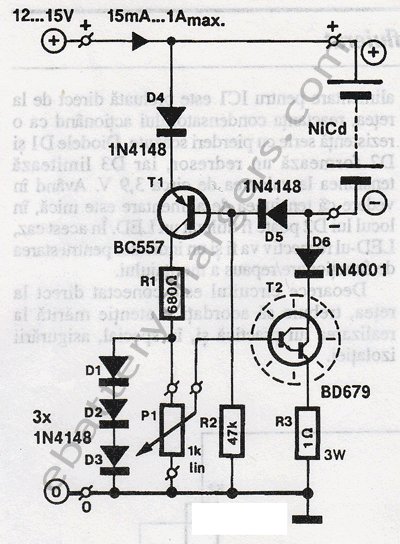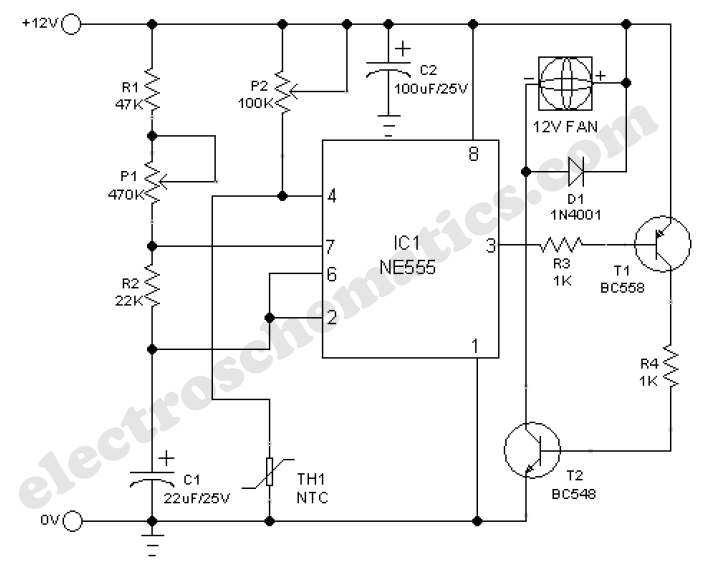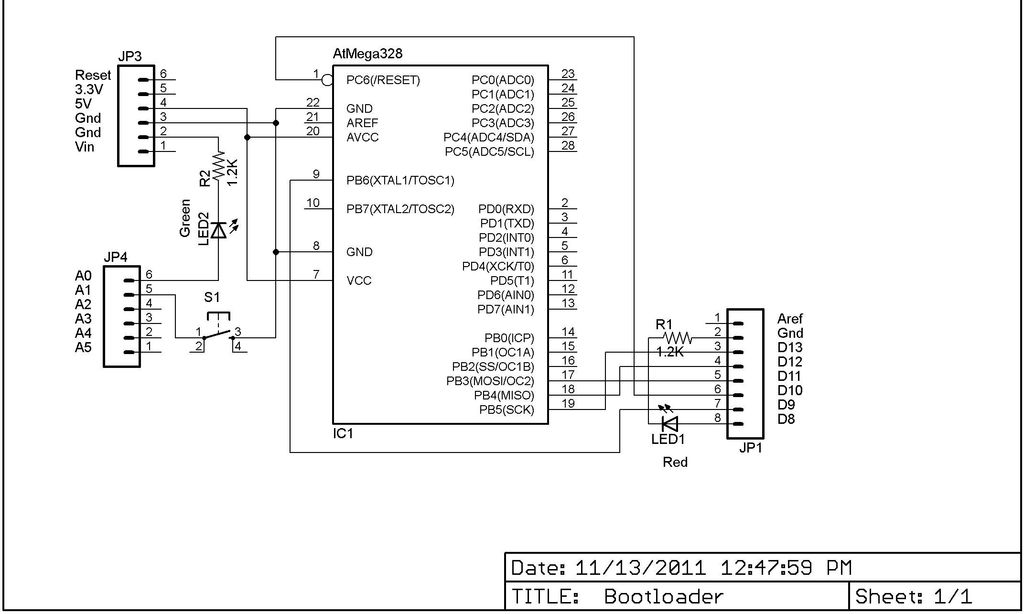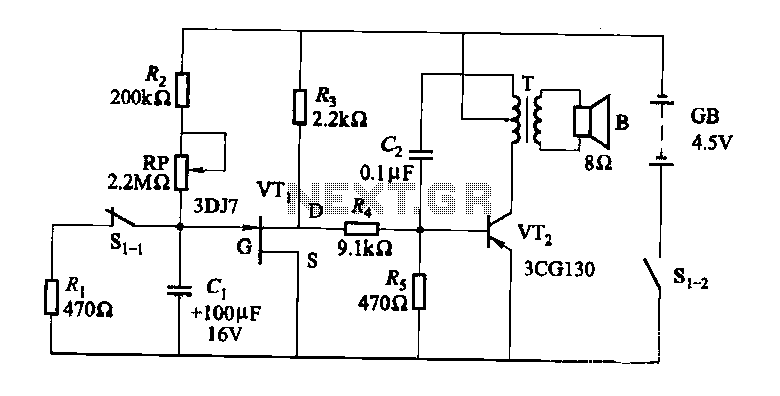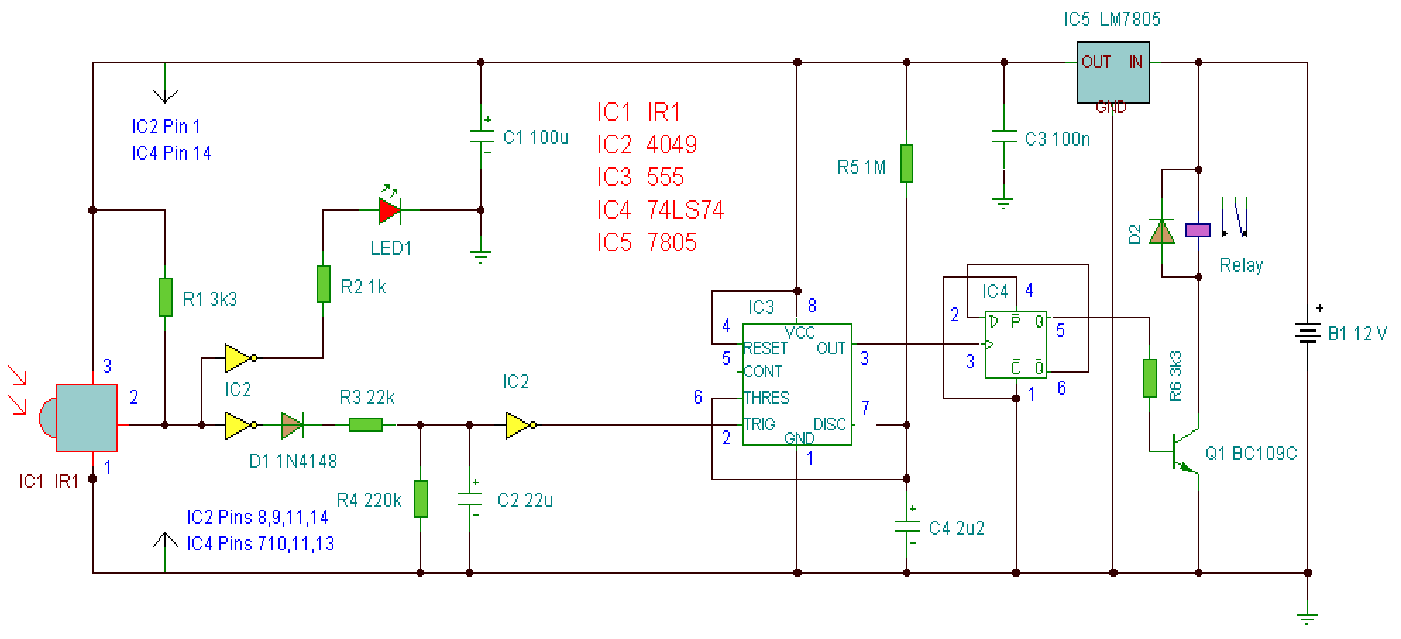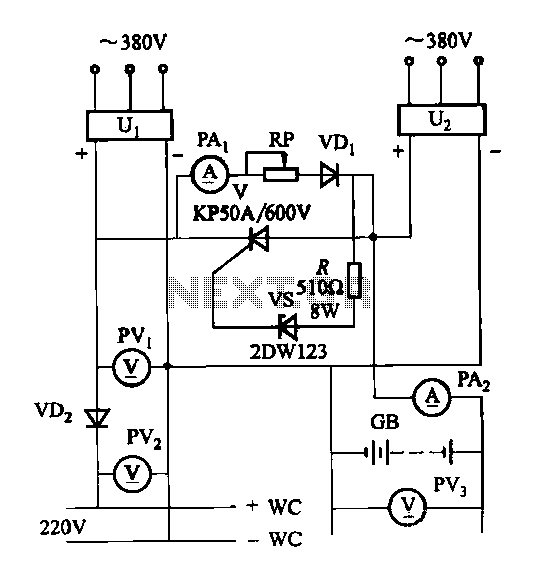
Circuit Crystal Oscillator/Amplifier
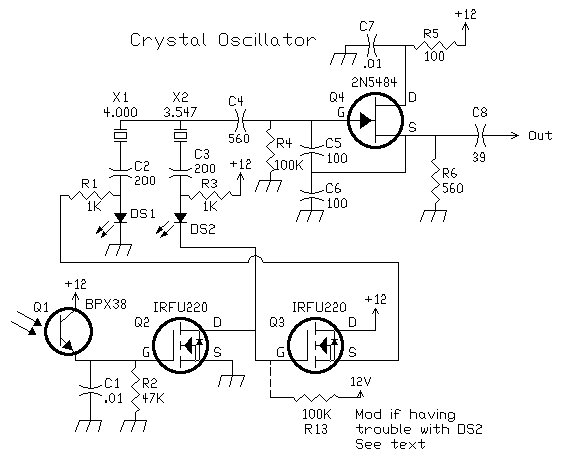
This oscillator is a variation of the oscillator presented by Ulrich L. Rohde, DJ2LR, in his article "Evaluating Noise Sideband Performance in Oscillators," published in Ham Radio, October 1978, Page 51. The original circuit can be found at the bottom of the web page titled "4 MHz Oscillator" in the Super Receiver section of the website. The article describes this oscillator as a suitable low-noise crystal oscillator circuit equipped with a wideband post-amplifier that delivers an output level of approximately +17 dBm or slightly higher. Any inductive-mode crystal within the frequency range of 400 KHz to 30 MHz can be utilized in this circuit without requiring any adjustments. The noise performance of the crystal oscillator circuits exceeds 120 dB/Hz at 1 KHz from the carrier and reaches 150 dB/Hz or more at 20 KHz from the carrier. Due to their superior noise performance, these circuits can function as local oscillators without compromising receiver performance; very few oscillators and nearly no frequency synthesizers achieve such low-noise sideband levels. An update from email correspondence with Dr. Rohde in April 2008 indicates that even better performance is now attainable. Dr. Rohde noted that at 5 MHz, his oscillator, using a 2008 quality crystal with Q=2.6 E6 and Cs=8ff, along with certain modifications, delivers exceptional phase noise. Diode switching is employed to alternate the crystal frequency, and standard LEDs were found to perform as effectively as 1N914 diodes, commonly used in crystal switching circuits within amateur radio literature. The benefit of using LEDs includes providing a visual indication of the active oscillator, which aids in diagnosing issues if the switching circuit fails or if ambient light interferes with the operation of the phototransistor. When the BPX38 (Q1) is off, no current flows through Q1, and the 100K resistor (R2) brings the gate voltage of Q2 to zero, effectively turning off Q2. B+ current flows through a 1K resistor (R3) and the 3.547 crystal LED (DS2), raising the gate of Q3 to 12 volts, which activates Q3. Since Q3 has a very high impedance at its gate, no current flows, and the 3.547 LED (DS2) remains off. However, Q3 supplies 12 volts to the 4.000 LED (DS1) through a 1K resistor (R1), generating an oscillator frequency of 4.000 MHz. If the 4.000 MHz crystal filter is active, the infrared emitter at the filter transmits light to the BPX38, turning on the phototransistor. The oscillator output then shifts to 3.547 MHz. When the BPX38 is active, the gate of Q2 rises to 12 volts, activating Q2. The source of Q2 is grounded, so when Q2 is turned on, the gate of Q3 is also grounded, deactivating Q3 and consequently turning off the 4.000 LED (DS1). This action grounds the cathode of the 3.547 LED (DS2), allowing B+ to flow through the 3.547 MHz LED (DS2), thus activating the oscillator at 3.547 MHz. Using standard bright red LEDs in this circuit has proven problem-free for the switching circuit. However, if modifications are made to the LEDs, a 100K resistor should be added to the gate of the bottom IRFU220 (closest to the 12-volt box near the row of holes). This resistor should connect to the gate of the IRFU220 and the 12-volt box. One lead should be inserted into the middle hole of the 12-volt box and soldered to the gate lead of the IRFU220 beneath the board, as illustrated in the schematic. The 200 pF capacitors positioned between the LEDs and the crystals prevent DC current from entering the crystals and allow for tuning of the crystal frequency, ensuring that switching between crystal filters produces a consistent BFO note in the output of the receiver. An optional trim capacitor is included on the 4.000 MHz crystal for future frequency refinement. Changing the 200 pF capacitors to different values is permissible, but removing them and replacing them with a wire is not recommended, as it may result in oscillator malfunction or crystal damage. The four unlabeled holes on the far left-hand side of the circuit board serve unspecified purposes.
This oscillator circuit is designed to deliver high-frequency stability and low phase noise, making it suitable for applications requiring precise frequency generation. The use of inductive-mode crystals allows for flexibility in frequency selection, while the wideband post-amplifier ensures that the output meets the necessary power levels for subsequent stages in a communication system. The integration of LED indicators enhances usability by providing immediate visual feedback on the oscillator's operating state, which is particularly advantageous during troubleshooting. The careful design of the switching mechanism and the incorporation of capacitive elements for frequency tuning exemplify a thoughtful approach to balancing performance and reliability. Overall, the oscillator represents a significant advancement in low-noise frequency generation technology, suitable for both amateur and professional radio applications.This oscillator is a variation of the oscillator presented by Ulrich L. Rohde, DJ2LR, in his article "Evaluating Noise Sideband Performance in Oscillators", Ham Radio, October 1978, Page 51. The original circuit is at the bottom of the web page "4 MHz Oscillator" in the Super Receiver section of this web site.
The article states the above oscilla tor is a "suitable low-noise crystal oscillator circuit with a wideband postamplifier that delivers the required +17 dBm output level or slightly more. Any inductive-mode crystal between 400 KHz and 30 MHz can be plugged into this circuit and give useful output without any adjustments.
" "The noise performance of the crystal oscillator circuits. is better than 120 dB/Hz at 1 KHz from the carrier, and 150 dB/Hz or more at 20 KHz from the carrier. Because of their excellent noise performance, these circuits can be used as local oscillators without degrading receiver performance; very few oscillators and practically no frequency synthesizers achieve their low-noise sideband levels.
" Update: Email correspondence with Dr. Rohde (April 2008) shows that even better performance is now available. Dr. Rohde wrote that ". at 5 MHz my oscillator with a 2008 quality crystal, Q=2. 6 E6, Cs=8ff, and some modifications gives a superb phase noise. " See curve below, much better noise now. Diode switching is used to switch the crystal frequency. Regular LEDs were found to work just as well as 1N914s, used in almost every crystal switching circuit in Ham radio literature. The advantage of using LEDs is the visual indication of which oscillator is on, helping with diagnosis in case the switching circuit is not operating properly, or in the case of this receiver, ambient light is interfering with the proper operation of the phototransistor.
When the BPX38 (Q1) is off, no current flows through Q1, the 100K resistor (R2), brings the gate voltage of Q2 to zero, turning off Q2. B+ flows through a 1K resistor (R3), through the 3. 547 crystal LED (DS2), which brings the gate of Q3 to 12 volts, which turns on Q3. No current is flowing, since the Gate of Q3 is very high impedance, so the 3. 547 LED (DS2) is off. But Q3 is turned on, which supplies 12 Volts to the 4. 000 LED (DS1) through a 1K resistor (R1), which yields an oscillator frequency of 4. 000 MHz. If the 4. 000 MHz crystal filter is on, the IRED emitter at the filter shines infra-red light on the BPX38, which turns the phototransistor on.
The oscillator output is at 3. 547 MHz. When the BPX38 is on, the Gate of Q2 raises to 12 volts, turning on Q2. The source of Q2 grounded, so when Q2 is turned on, the Gate of Q3 is grounded, turning off Q3, which turns off the 4. 000 LED (DS1). This also grounds the cathode of the 3. 547 LED (DS2) and B+ flows through the 3. 547 MHz LED (DS2), turning on the oscillator to 3. 547 MHz. When the kit LEDs (bright reds) are used in this circuit, there are no problems with the switching circuit.
But if the LEDs are modified, a 100K resistor needs to be added to the gate of the bottom IRFU220 (One closest to the 12 Volt box near the row of holes. ). This resistor goes to the gate of the IFFU220 and to the 12 Volt box. Put one lead in the middle hole of the 12 Volt box and then solder the other end to the gate lead of the IRFU220 underneath the board.
See the schematic above. The 200pf capacitors between the LEDs and the crystals keep DC current from getting into the crystals, and provide tuning of the crystal frequency so that switching between the crystal filters gives approximately the same BFO note in the output of the receiver. An optional trim cap is provided on the 4. 000MHz crystal to future refine the crystal frequency. Changing the 200pf caps to other values is no problem, but do not remove the capacitors and replace them with a wire, for the oscillator may not work, or crystal damage may occur.
The four unlabeled holes on the far left hand side of the 🔗 External reference
This oscillator circuit is designed to deliver high-frequency stability and low phase noise, making it suitable for applications requiring precise frequency generation. The use of inductive-mode crystals allows for flexibility in frequency selection, while the wideband post-amplifier ensures that the output meets the necessary power levels for subsequent stages in a communication system. The integration of LED indicators enhances usability by providing immediate visual feedback on the oscillator's operating state, which is particularly advantageous during troubleshooting. The careful design of the switching mechanism and the incorporation of capacitive elements for frequency tuning exemplify a thoughtful approach to balancing performance and reliability. Overall, the oscillator represents a significant advancement in low-noise frequency generation technology, suitable for both amateur and professional radio applications.This oscillator is a variation of the oscillator presented by Ulrich L. Rohde, DJ2LR, in his article "Evaluating Noise Sideband Performance in Oscillators", Ham Radio, October 1978, Page 51. The original circuit is at the bottom of the web page "4 MHz Oscillator" in the Super Receiver section of this web site.
The article states the above oscilla tor is a "suitable low-noise crystal oscillator circuit with a wideband postamplifier that delivers the required +17 dBm output level or slightly more. Any inductive-mode crystal between 400 KHz and 30 MHz can be plugged into this circuit and give useful output without any adjustments.
" "The noise performance of the crystal oscillator circuits. is better than 120 dB/Hz at 1 KHz from the carrier, and 150 dB/Hz or more at 20 KHz from the carrier. Because of their excellent noise performance, these circuits can be used as local oscillators without degrading receiver performance; very few oscillators and practically no frequency synthesizers achieve their low-noise sideband levels.
" Update: Email correspondence with Dr. Rohde (April 2008) shows that even better performance is now available. Dr. Rohde wrote that ". at 5 MHz my oscillator with a 2008 quality crystal, Q=2. 6 E6, Cs=8ff, and some modifications gives a superb phase noise. " See curve below, much better noise now. Diode switching is used to switch the crystal frequency. Regular LEDs were found to work just as well as 1N914s, used in almost every crystal switching circuit in Ham radio literature. The advantage of using LEDs is the visual indication of which oscillator is on, helping with diagnosis in case the switching circuit is not operating properly, or in the case of this receiver, ambient light is interfering with the proper operation of the phototransistor.
When the BPX38 (Q1) is off, no current flows through Q1, the 100K resistor (R2), brings the gate voltage of Q2 to zero, turning off Q2. B+ flows through a 1K resistor (R3), through the 3. 547 crystal LED (DS2), which brings the gate of Q3 to 12 volts, which turns on Q3. No current is flowing, since the Gate of Q3 is very high impedance, so the 3. 547 LED (DS2) is off. But Q3 is turned on, which supplies 12 Volts to the 4. 000 LED (DS1) through a 1K resistor (R1), which yields an oscillator frequency of 4. 000 MHz. If the 4. 000 MHz crystal filter is on, the IRED emitter at the filter shines infra-red light on the BPX38, which turns the phototransistor on.
The oscillator output is at 3. 547 MHz. When the BPX38 is on, the Gate of Q2 raises to 12 volts, turning on Q2. The source of Q2 grounded, so when Q2 is turned on, the Gate of Q3 is grounded, turning off Q3, which turns off the 4. 000 LED (DS1). This also grounds the cathode of the 3. 547 LED (DS2) and B+ flows through the 3. 547 MHz LED (DS2), turning on the oscillator to 3. 547 MHz. When the kit LEDs (bright reds) are used in this circuit, there are no problems with the switching circuit.
But if the LEDs are modified, a 100K resistor needs to be added to the gate of the bottom IRFU220 (One closest to the 12 Volt box near the row of holes. ). This resistor goes to the gate of the IFFU220 and to the 12 Volt box. Put one lead in the middle hole of the 12 Volt box and then solder the other end to the gate lead of the IRFU220 underneath the board.
See the schematic above. The 200pf capacitors between the LEDs and the crystals keep DC current from getting into the crystals, and provide tuning of the crystal frequency so that switching between the crystal filters gives approximately the same BFO note in the output of the receiver. An optional trim cap is provided on the 4. 000MHz crystal to future refine the crystal frequency. Changing the 200pf caps to other values is no problem, but do not remove the capacitors and replace them with a wire, for the oscillator may not work, or crystal damage may occur.
The four unlabeled holes on the far left hand side of the 🔗 External reference
